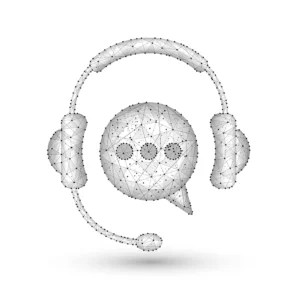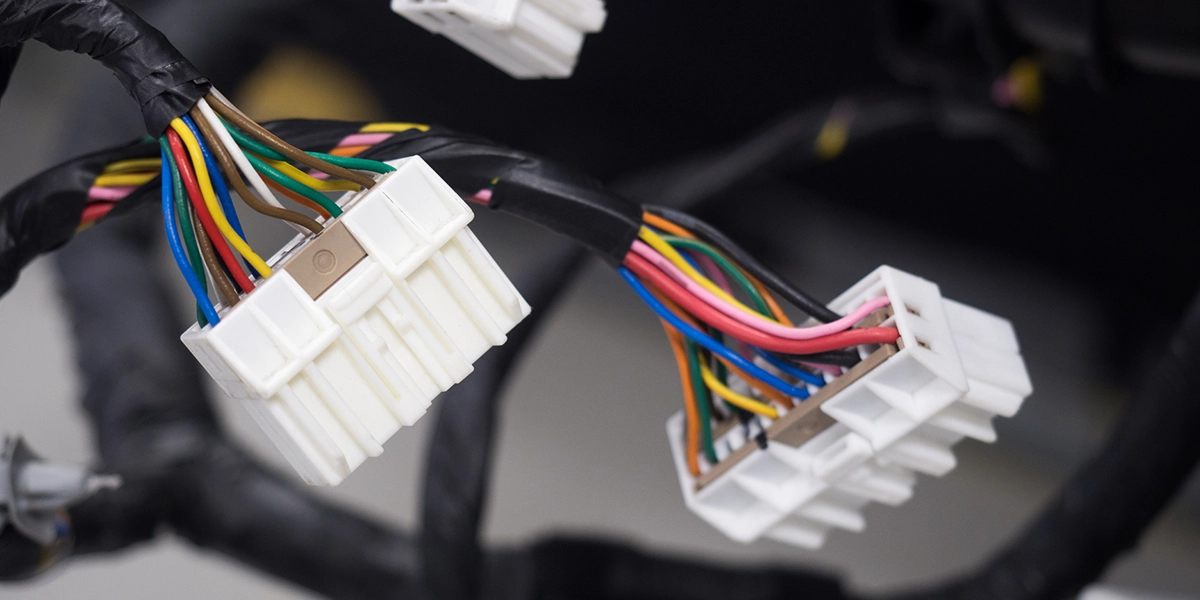“Content Creation”. It sounds neutral enough. But there are, in fact, right and wrong ways to approach content creation, and they can have huge ramifications for a customer’s product experience.
Tweddle Group Marketing and Design Director Lisa Ekstrom has seen it all. She’s acutely tuned into the value of product content and the best practices necessary to make it work.
In Part One of our conversation, she recounted ways she and her team have helped clients customize their support to address the needs of specific end-user groups.
In Part Two, she told us how creative teams support this customization. We also confronted ‘the Ghost Town Effect’—that eerie feeling consumers experience when no branded product support is available.
In our concluding installment, Lisa shares a personal story, in which a lack of product support forced her to resort to ‘Plan E’—and explains why companies probably don’t want their customers going to such extreme measures.
Lisa’s Furniture Misadventure
Certain brands really spring to mind when you think about great support content and customer care.
It’s such a relief when you have an issue and can quickly find an answer. I’m speaking personally, now. Way better than when there’s no support number and no customer support website.
There’s one manufacturer whose products I use quite a bit. They make music software, synthesizers. Solid products, but their lack of support content has literally shaved a day or two off my life.
Have you ever encountered that sort of thing?
I bought a piece of furniture with smart features on it, and it was not cheap. We got it at a 50% off Black Friday sale with other rebates but, however you slice it, it’s an expensive purchase.
So, it shows up, and it’s got wires and remotes and all these accessory features, but it was broken.
It did not work as advertised.
Nope. It was broken. Which, of course, things happen. No big deal, right? We figured we’d access some support and solve the problem.
It was an absolute disaster.
There was no support documentation. Nothing in the package. Nothing online.
We called customer support and went in this big circle.
"We called customer support and went in this big circle."
Uh-oh. Everybody knows the big circle.
We couldn’t get anyone out to fix it.
It was an utter failure of product support and customer care.
Ultimately, we wound up going on the company CEO’s LinkedIn page.
And we messaged her there, on LinkedIn. My husband sent her an outline of everything that happened. He said, ‘Here’s our issue, here’s a report on everything we’ve been through. We’d like some help, here’s our phone number.’
And that finally resolved the problem.
Right, but no one wants to have to email the CEO…
(Laughs) I mean, we didn’t! Maybe some people enjoy that. For us, it was not our first step.
(Laughs) Emailing the CEO is more of a Plan C or a Plan D.
Right. Plan E. It took so much effort just to get this thing fixed.
The overall experience was such that I can safely say I will never buy another thing from this brand again. I’ll advise people I know to do the same. It’s unfortunate, you know, but as a brand this company has lost my trust.
So, ideally, a brand will provide instructions—preferably multi-channel—and a clear line for customer support. Customer support should be equipped to help you. When you have an issue, there should be some way they can say, ‘Here’s how you fix it.’
‘Here’s what you do if something doesn’t go right.’
And, crucially, ‘We’re going to be there with you through this process. We’re not going to abandon ship just because we already have your money.’
Was there a chatbot set up in this situation you described?
You know, there wasn’t, but I honestly don’t know how much a chatbot would have helped us resolve anything. That’s a solution a lot of companies have put in place but chatbots often leave a lot to be desired. They become their own frustrating thing.
When they need help, consumers want to assume they’ve got multiple options available. And keep in mind, things go wrong often at the least convenient time possible.
Right.
A lot of consumers don’t want to sit through all these automated, sort of ‘empathetic’ sentences. ‘I’m sorry you feel that way, I’m here to help you,’ all of that. We certainly didn’t.
You just want someone to tell you what you need to know. You just want them to give you a human being to talk to so you don’t have to type for hours and navigate this maze of prompts.
I will say Amazon’s got a pretty good one because they don’t ask too many questions. They don’t demand a lot of detail—it’s just, ‘Is something wrong with it? OK. Here’s your refund.’
That’s true. As long as the details of your situation align with the pre-fab responses they provide, you can get what you need from the Amazon chatbot pretty quick.
Right. And, on the flipside, I’ve dealt with interfaces where they try to squeeze you for a lot of information. I think all but the heartiest, most determined customers get so frustrated they end up logging off or hanging up. Now, best-case scenario, that customer is very dissatisfied. Worst-case, they’re on the warpath.

Content Creation and Customer Support
So how does content creation relate to efforts to improve customer support?
Well, focusing on content creation specifically—that is, not getting into the content’s distribution, maintenance or accessibility—user experience is the big thing. It all centers around engineering the content to communicate the necessary information. You pursue basic values like clarity, brevity and focus.
From a design perspective, you might have some very technical illustrations. These might be chaotic, they might present a lot of information without visual hierarchy.
This type of visual really slows down the user’s ability to understand the content, so you’ll want to rework the visuals so they can be understood quickly.
Same with text. There’s the feeling you get when you’ve read something two or three times and you’re struggling to understand what’s being said.
That’s probably not the best user experience. A writer can take that verbiage, trim it down and reconfigure it to increase clarity.
People should be able to understand your content at a glance. And that’ll happen naturally if you approach content creation correctly.
The goal is, you know, the end user either solves the problem themselves or—if they can’t, and they need to call support—they at least understand the situation well enough that they know what to ask.
"The user doesn’t care if a marketing agency did the ads and a separate entity handled content creation. They only care about their experience. And for that experience to be positive, all content should reflect 'The Brand'. When we say, ‘brand integrity’, that’s what we mean."
Moving the whole process along.
That’s the goal. We’ve seen OEMs really reduce the strain on their call centers by offering better do-it-yourself support to the end user, or to field technicians, for that matter. The situation I’m thinking of involved field technicians, and they were just overwhelming the call centers. By offering better solutions to the field—in this case it was an intelligent diagnostic platform rather than static content—they cut call volumes almost in half.
And, of course, when users do reach out to a call center, everybody tends to forget about the person answering the phone. But it’s a key piece of the puzzle—does the support agent have the information they need?
More to the point, is their reference information up to date? Technology is evolving so rapidly call centers often don’t have access to the latest data.
It’s a big thing now that everything is connected. Things require updates. Which version update has been flashed? The end user likely won’t know—they’ll just grab the phone, you know, ‘Oh my gosh, this thing won’t work.’
Or ‘I ran this update and now it won’t start.’
And often that information is so new the call centers don’t have any answer to give them.

What happens in a situation like that?
What often happens is that call or that issue will go into a containment.
They take it back to the OEM. They have to troubleshoot it and eventually they find an answer and reconnect with the end user. It’s a very slow process.
What more and more OEMs will do is bring in a supplier to manage the updating of all that content, and there are automated systems to manage the process. When there’s new information, or if something changes, the system executes global updates from the HQ to the end user to the call center, so everyone is working from the right playbook.
That’s a step away from content creation itself and getting more into content maintenance and distribution. It all works together—content design, organization, management and distribution.
The good news is, once you have these systems in place the systems themselves assume a lot of the work.
So information distribution platforms can automate the process, but the information itself must be prepped appropriately for that to work. But before that, the original content has to be assembled and tagged in the right way for people to understand it quickly.
And now, with AI tools scraping this content and providing summary responses on the fly, it’s even more important to have strong original content creation.
Right? Because otherwise, it’s garbage in, garbage out. If the original content is not accurate, clear and correct you’ll run into some real problems when AI is called on to build replies.
It’s just more reason to ensure your inputs are good and your components are well-managed.
POST-SALE AS AN EXTENSION OF THE MARKETING EFFORT
Last question. I’ve heard people argue that post-sale content and marketing are separate entities. I’ve also heard people argue that there’s a relationship between the two. In your mind, what’s the relationship between customer care, content creation and marketing?
They are a seamless entity.
To me, they’re all one and the same.
If you’re sold on a product vision, on a particular brand promise, it should follow you from the first ad that snagged your attention on social media all the way to the dealership or the store where you make the purchase.
It should continue with the sales rep who’s onboarding you, to the experience you get at home when you’re trying to learn more about it.
That brand promise should be there when you need to do anything with the product—whether you’re fixing it or just updating it.
It should continue if you go to an authorized dealer for service.
It should be a seamless experience from a marketing and design perspective.
And even the service manual, although it’s really meant for the technician, that technician is the end user at that point in time, so we cater to them. And they’re also interfacing with the product owner, so we want to set them up for success as they work to reinforce the same seamless experience—all the way to trading it in and buying a new model from the same manufacturer.
That seamless experience for the end user should be the common denominator running through the entire process.

They’re the one who saw the ad.
They’re the one spending the money.
They’re the one buying the product.
They’re the one taking it home.
They’re the one taking it to get fixed.
OEMs are always best served by keeping that person in mind.
I mean, I’m happier as a customer when they do.
Funny how that works.
It is! Well, thank you very much.
Thank you!
Special thanks to The Cranbrook Institute of Science for hosting our interview and photoshoot.
Original photography by Matt Wong.



